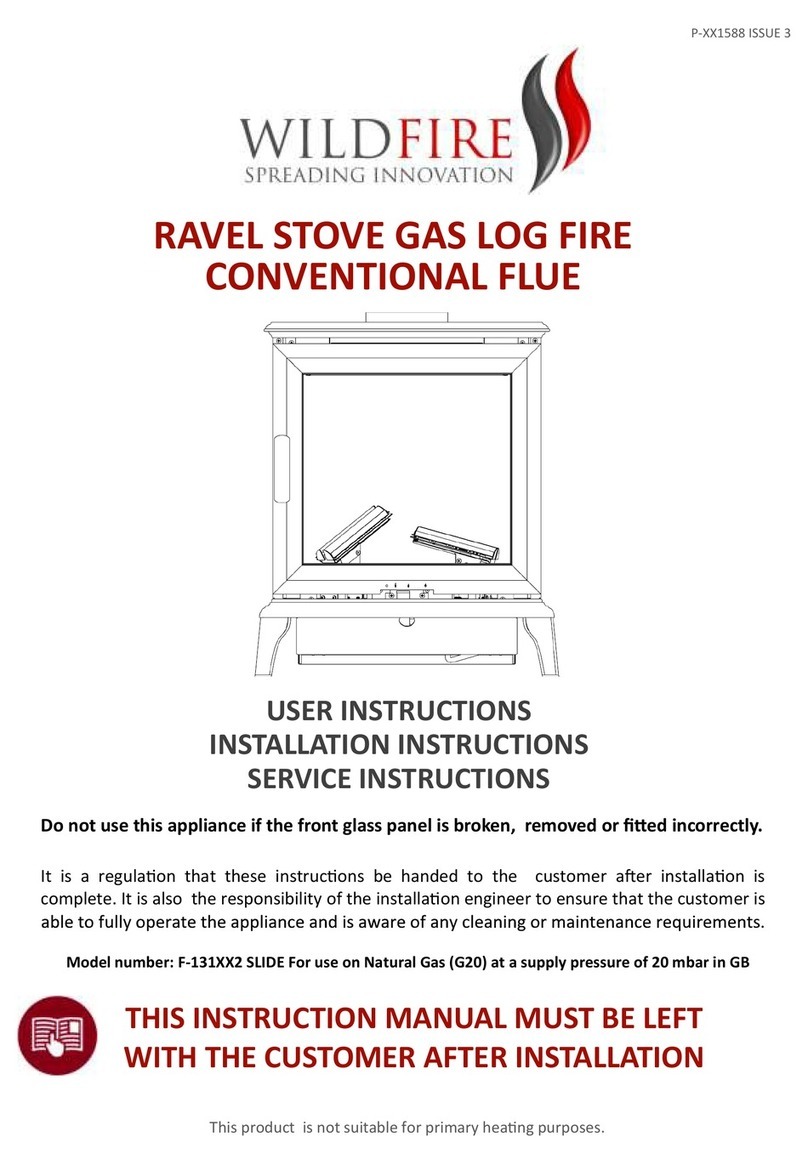
7
1. An ember layer is quickly established by using 2-4 relighters or 7-10 crumpled-up pages
of newspaper lit beneath approximately 1-2 kg dry kindling sticks.
2. You should completely open the primary & secondary air intakes.
3. After the paper/relighters have ignited, the door should be kept ajar. To provide sucient
chimney draught quickly an opening of approximately 2 cm is probably required.
4. After the chimney has warmed suciently (5-10 minutes) a good draught should now be
established and the door should now be closed completely. If all the conditions are fullled,
after a further 15-20 min (approx.) a good ember base will have formed in the rebox and
more fuel can be gradually added.
Under normal circumstances, when refuelling, the stove door should be opened carefully for
the rst 2-3 centimetres. This will allow the pressure within the ue to balance and prevent
any smoke spillage into the room. The stove door ought not to be opened whilst the re is in
normal use.
5. Normally refuelling should be done whilst there are still plenty of glowing embers left
in the rebox. Use a poker to spread the embers along the bottom, pulling most to the
front of stove.
6. Gradually add small amounts fresh fuel to the re, allowing for plenty of gaps for oxygen
to circulate.
7. When the primary and secondary air supplies have been opened to the maximum setting
and the door is closed, the new supply of fuel will ignite fairly quickly.
8. Once the re has taken adjust the air to the required output position.
A gentle re can be achieved by lling with smaller amounts of fuel and turning down the
air supplies, but remember it is most important to maintain a good bed of glowing embers.
Main rules for regulating heat are:
• A little heat – a litte fuel – a little air
• A lot of heat – a lot of fuel - a lot of air
For overnight burning, you should put a lot of fuel in the stove and reduce the air intake.
Lighting in the summer when the heat requirement is low, a small bright re should be estab-
lished. Prolonged ‘idling’ res or res using wet or ‘green’ wood will result in poor combustion
and will therefore create a higher risk of soot and tar formation within the ue. Allowed to
build-up these deposits can potentially lead to a chimney re.
2.2 Other types of fuel
Your Morsø stove is DS approved for burning with wood, but of course it is also possible to
burn it with other types of fuel, depending on how frequently you want to use your stove.
Briquettes of brown coal and wood are suitable as supplementary fuel. They are easy to light
and ideal for night burning since they smoulder for a long time.
Coke and other manufactured smokeless coals and are also suitable and are ideal for over
night burning. They do however require larger amounts of combustion air than wood res.
High sulphur content fuels like bituminous house coal is not recommended and if used will
reduce the life of the internal cast parts.



















































